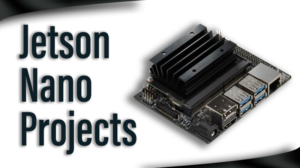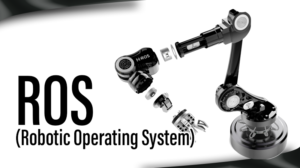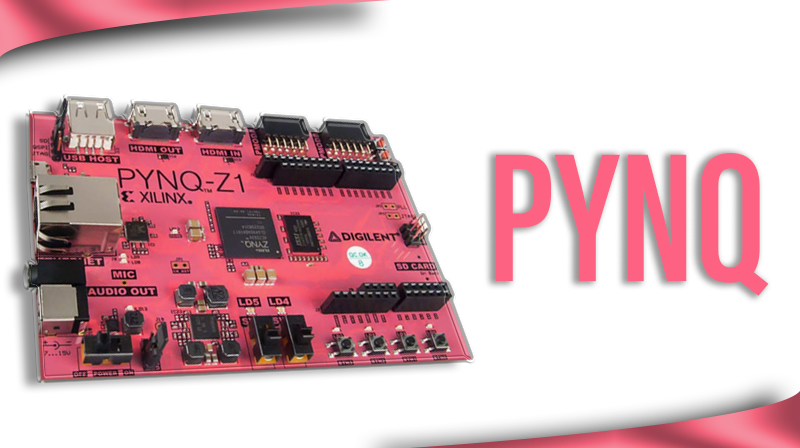
PYNQ
PYNQ is the open source platform by Xilinx with Zynq System on chip (SOC). The main feature of this board is you can use python programming in this board using Jupyter Notebook. So as same as FPGA Parallel hardware execution is done as well as video processing with high frame rate with hardware accelerated algorithms.
Available Boards
- Pynq-Z1
- Pynq-Z2
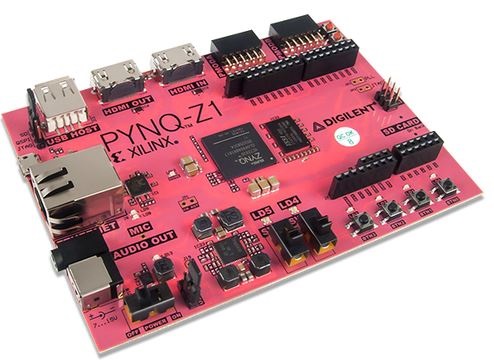
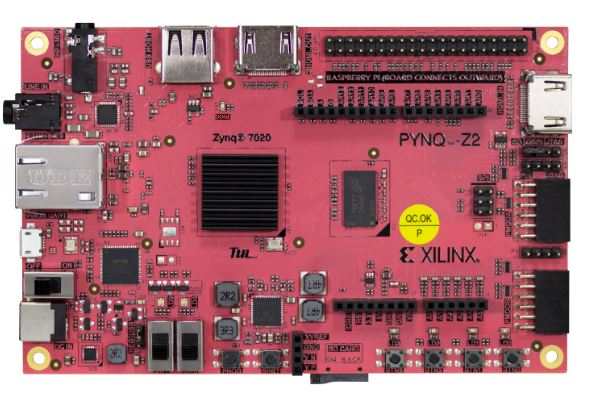
Specifications
Both PYNQ-Z1 and PYNQ-Z2 has same ZYNQ XC7Z020-1CLG400C
Specifications of ZYNQ XC7Z020-1CLG400C
- 650MHz dual-core Cortex-A9 processor
- DDR3 memory controller with 8 DMA channels and 4 high performance AXI3 slave ports
- High-bandwidth peripheral controllers: 1G Ethernet, USB 2.0, SDIO
- Low-bandwidth peripheral controller: SPI, UART, CAN, I2C
- Artix-7 family programmable logic
- 13,300 logic slices, each with four 6-input LUTs and 8 flip-flops
- 630 KB of fast block RAM
- 630 KB of fast block RAM
- 4 clock management tiles, each with a phase-locked loop (PLL) and mixed-mode clock manager (MMCM)
- 220 DSP slices
- On-chip analog-to-digital converter (XADC)
Other Features comparison
| PYNQ-Z1 | PYNQ-Z2 |
| Memory: 512MB DDR3 with 16-bit bus @ 1050Mbps 16MB Quad-SPI Flash with factory programmed globally unique identifier (48-bit EUI-48/64™ compatible). MicroSD slot |
Memory: 512MB DDR3 with 16-bit bus @ 1050Mbps 16MB Quad-SPI Flash with factory programmed 48-bit globally unique EUI-48/64™ compatible identifier MicroSD slot |
| USB and Ethernet: USB-JTAG Programming circuitry USB-UART bridge USB OTG PHY (supports host only) Gigabit Ethernet PHY |
USB and Ethernet: Gigabit Ethernet PHY Micro USB-JTAG Programming circuitry Micro USB-UART bridge USB 2.0 OTG PHY (supports host only) |
| Power: Powered from USB or any 7V-15V source (see recommended products) |
Power: Powered from USB or any 7V-15V source |
| Audio and Video: Electret microphone with pulse density modulated (PDM) output 3.5mm mono audio output jack, pulse-width modulated (PWM) format HDMI sink port (input) HDMI source port (output) |
Audio and Video: HDMI sink port (input) HDMI source port (output) I2S interface with 24bit DAC with 3.5mm TRRS jack Line-in with 3.5mm jack |
| Switches, push-buttons, and LEDs: 4 push-buttons 2 slide switches 4 LEDs 2 RGB LEDs |
Switches, Push-buttons and LEDs: 4 push-buttons 2 slide switches 4 LEDs 2 RGB LEDs |
| Expansion Connectors: Two standard Pmod ports 16 Total FPGA I/O |
Expansion Connectors: Two standard Pmod ports 16 Total FPGA I/O (8 shared pins with Raspberry Pi connector) Arduino Shield connector 24 Total FPGA I/O 6 Single-ended 0-3.3V Analog inputs to XADC Raspberry Pi connector 28 Total FPGA I/O (8 shared pins with PmodA port) |
Advantage of PYNQ
- Since we can use python programming, It is possible to do every image and video processing application easily.
- Deep learning & Machine learning can be done by installing required libraries using Terminal option
- For further acceleration, Intel Movidius compute stick can be interfaced with the USB port of the PYNQ board.

